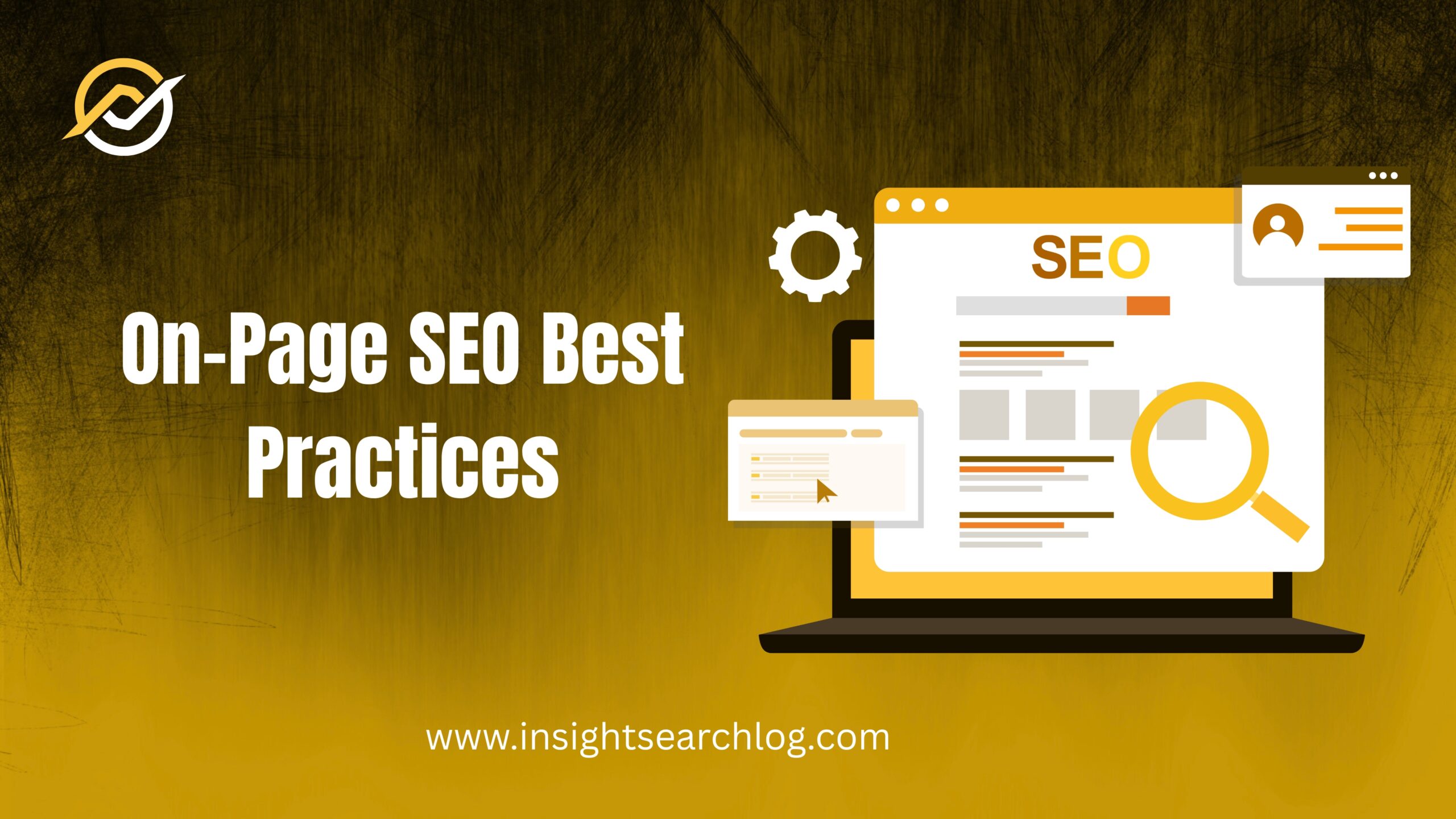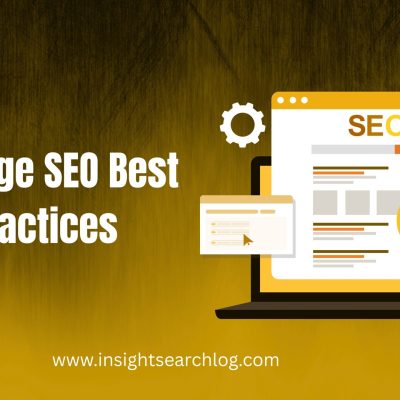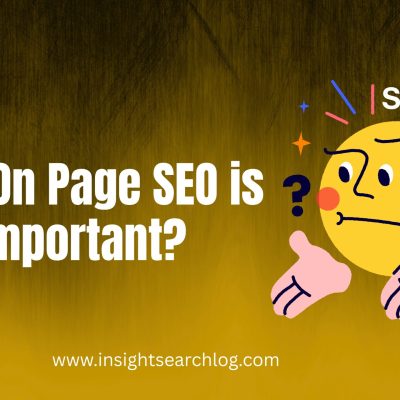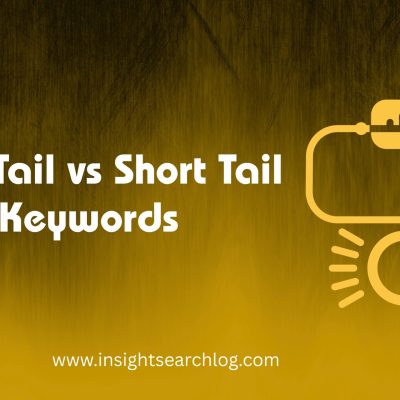Getting your website to rank higher on Google doesn’t have to feel like solving a puzzle blindfolded. On-page SEO is the foundation of website ranking, and when you get it right, you’ll see your content climbing the search results faster than you ever imagined.
On-page SEO is great because it’s easy to use and gives you full power over every part. Off-page factors depend on websites outside of your domain, but on-page factors only affect websites inside your domain. That’s why smart marketers start their work here.
This guide will teach you everything you need to know about how to dominate search results with effective on-page optimization, whether you’re just starting out or want to make your current plan better.
I have also written a detailed blog on Why SEO is Important, you can read it here.
Why On-Page SEO Matters More Than Ever
The most recent versions of search engines are very smart. No longer are they only looking at phrase stuffing and simple SEO tips. The algorithms used today give more weight to websites that really do a good job for their users.
User experience SEO has become the cornerstone of modern search rankings. Google wants to deliver results that people actually find helpful, engaging, and easy to navigate. This shift means that focusing on proven SEO optimization techniques isn’t just about pleasing search engines – it’s about creating content that real people love to read and share.
The best websites today are those that are both technically excellent and have real worth. They are easy to use, load quickly, look great on phones, and give people the information they are looking for.
Learn the Top On-Page SEO Best Practices for 2025
Now let’s get into the specific things you can do to make your content stand out in search results. In reality, these are techniques that great websites use every single day. They’re not just ideas.
Content Optimization That Works
Write Content for a Website that ranks higher by focusing on your audience first. Start every piece of content by asking yourself: “What question is my reader trying to answer?” When you lead with genuine helpfulness, the technical optimization becomes much more natural.
Strategic keyword placement improves visibility, but it needs to feel organic. Sprinkle your target keywords throughout your content like seasoning – enough to add flavor, but not so much that it overwhelms the dish. Your primary keyword should appear in your introduction, at least one subheading, and naturally throughout the body text.
I have written a detailed blog on Effective Keyword Research Techniques for Improved Organic SEO Traffic. If you want to read it, check it out
Follow these SEO content writing tips to rank fast:
- Address your reader’s pain points directly in the first paragraph
- Use conversational language that feels like talking to a friend
- Break up long paragraphs into digestible chunks
- Include specific examples and actionable advice
- End sections with clear takeaways
What are the most effective ways to research content gaps in your niche? This question opens up opportunities for future content that can link back to your on-page optimization articles.
Technical Elements That Make a Difference
Optimize your meta title for better CTR by making it irresistible to click. Your title should promise a clear benefit, create curiosity, or solve a specific problem. Think of it as your content’s elevator pitch – you have just a few seconds to convince someone that clicking through is worth their time.
Proper use of H1, H2, and H3 improves SEO by creating a logical content hierarchy. Your H1 should contain your primary keyword and clearly state what the page is about. H2 tags break your content into main sections, while H3 tags organize subtopics within those sections.
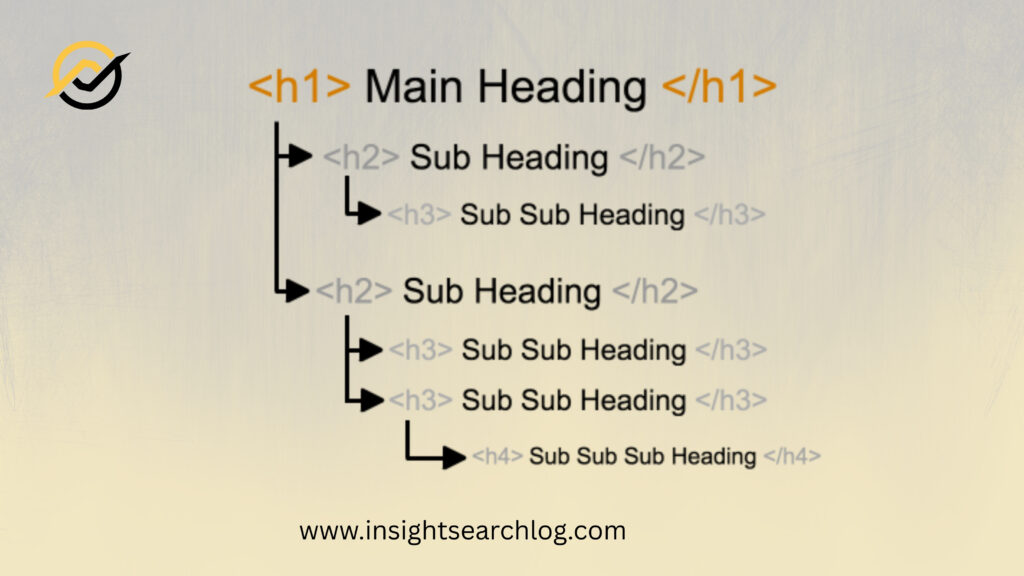
An SEO-friendly URL structure improves indexing when URLs are kept short, descriptive, and keyword-rich. Instead of generic URLs filled with numbers and parameters, use clear paths that tell both users and search engines exactly what to expect.
How can you audit your website’s current URL structure to maximize its SEO impact? This represents another valuable topic for internal linking opportunities.
Mobile Optimization and Speed
Mobile SEO optimization ensures a better user experience because most of your visitors are probably browsing on their phones. Your content needs to look perfect and load quickly on small screens. This means readable font sizes, easily tappable buttons, and images that scale properly.
Page load speed is a crucial ranking factor that directly impacts both your search rankings and user satisfaction. Slow websites frustrate visitors and send negative signals to search engines. Optimize your images, minimize code, and choose reliable hosting to keep your pages loading in under three seconds.
Use alt text for images to improve SEO while also making your content more accessible. Alt text should describe what’s happening in the image while incorporating relevant keywords when it makes sense naturally.
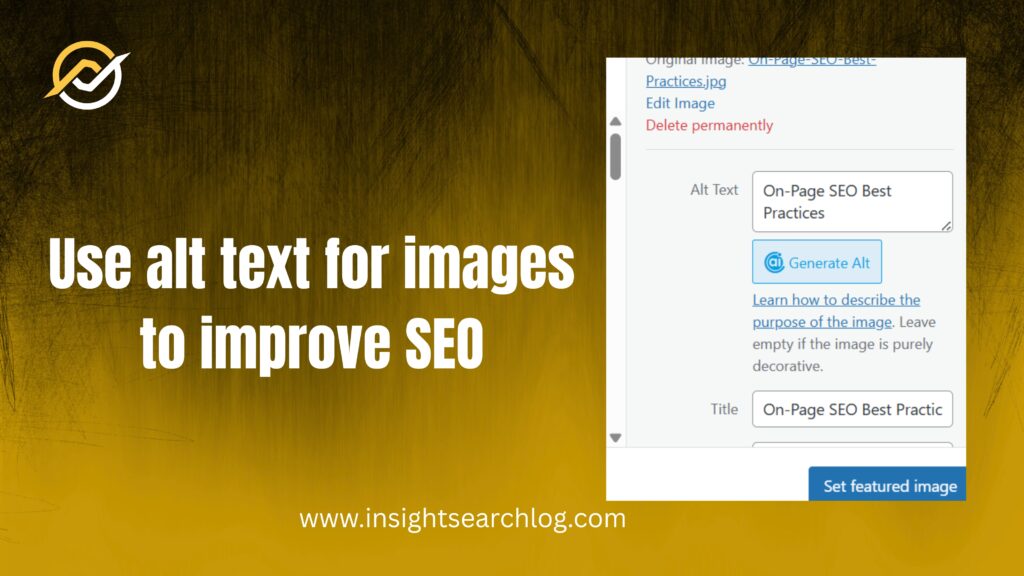
Understanding the Top SEO Ranking Factors in 2025
Search algorithms continue evolving, but certain factors remain consistently important. Understand the top SEO ranking factors in 2025 by focusing on these core elements:
Content Quality and Relevance
Your content must thoroughly answer the searcher’s query. Google rewards comprehensive, well-researched articles that become the definitive resource on their topic. Shallow content that barely scratches the surface rarely ranks well anymore.
E-A-T (Expertise, Authoritativeness, Trustworthiness)
Search engines want to show information that comes from reliable sources. Give detailed explanations to show that you know what you’re talking about, quote reliable sources, and make sure the quality of all your content is the same.
Search Intent Alignment
Different searches have different goals. Someone searching “how to” wants a tutorial, while someone searching “best” wants comparisons. Match your content format to what searchers actually want.
What are the emerging SEO ranking factors that most websites are still ignoring? This question suggests another valuable article for your content strategy.
Build a Strong Internal Linking Strategy
Build a strong internal linking strategy by connecting related pieces of content throughout your website. Internal links help search engines understand your site’s structure while guiding visitors to additional valuable resources.
Link to your most important pages from multiple other pages on your site. Use descriptive anchor text that tells readers exactly what they’ll find when they click through. Avoid generic phrases like “click here” or “read more.”
Create topic clusters by linking related articles together. If you write about different aspects of SEO, make sure those articles reference and link to each other where relevant.
Advanced Optimization Techniques
Schema markup enhances your search results by providing additional context to search engines. Rich snippets, star ratings, and enhanced listings all come from properly implemented schema markup. While it might seem technical, the visual impact in search results is worth the effort.
Technical on-page SEO boosts indexing through clean code, proper site architecture, and crawler-friendly navigation. Make sure your important pages are easily accessible and that your site structure makes logical sense.
Maintain the right keyword density for SEO without obsessing over exact percentages. Focus on natural language that serves your readers, and keyword density will typically fall into the right range automatically.
Easy On-Page SEO Tips for Beginners
Easy on-page SEO tips for beginners start with the basics that deliver immediate results:
- Write compelling meta descriptions that encourage clicks
- Use your target keyword in the first 100 words of your content
- Include keywords in your image file names before uploading
- Create descriptive, keyword-rich headings that organize your content clearly
- Link to relevant external sources to support your claims
How can beginners avoid the most common on-page SEO mistakes that hurt rankings? This question represents another opportunity for helpful follow-up content.
A Complete SEO Content Checklist for Bloggers
A complete SEO content checklist for bloggers ensures you never miss important optimization opportunities:
Before Publishing:
- [ ] Primary keyword appears in title, first paragraph, and at least one heading
- [ ] Meta title is under 60 characters and compelling
- [ ] Meta description is under 160 characters and action-oriented
- [ ] URL is short, descriptive, and keyword-focused
- [ ] Images have descriptive alt text
- [ ] Content includes relevant internal and external links
Content Quality Check:
- [ ] Article thoroughly addresses the search query
- [ ] Information is accurate and up-to-date
- [ ] Writing style is conversational and engaging
- [ ] Content provides unique value not found elsewhere
- [ ] Call-to-actions guide readers to next steps
Measuring Your On-Page SEO Success
Track your results to understand what’s working and what needs improvement. Monitor your rankings for target keywords, but also pay attention to organic traffic growth, time on page, and conversion rates.
Use tools like Google Search Console to identify which queries bring visitors to your site. This data reveals optimization opportunities and content gaps you can fill with future articles.
What are the most reliable tools for tracking on-page SEO performance over time? This question opens up discussion about SEO analytics and measurement.
Taking Action on Your On-Page SEO
It’s possible for the methods in this guide to work, but only if you follow them regularly. Start with the most important pages on your site and work your way down to the rest.
Remember that on-page SEO is an ongoing process, not a one-time task. Search algorithms evolve, user expectations change, and new competitors enter your space. Stay committed to continuous improvement and regular updates.
Ready to transform your website’s search performance? Begin by auditing your current pages against this checklist, then systematically implement these optimization techniques. Your future self will thank you when you see those rankings climbing month after month.
Websites that are at the top of search results today didn’t get there by accident. They stuck to tried-and-true methods, never gave up, and always put the needs of their readers ahead of everything else. It’s now your turn to join them.
Read my blog on SEO Competitor Analysis PDF 2025 — and download the PDF if you need it.

